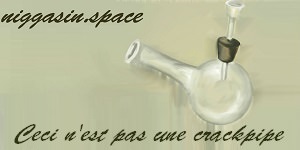Originally posted by NARCassist
that's what you non-users don't get when you look at every negative aspect of heroin use, dictated constantly by the fucking media system, usually coz it reinforces your stuck up need to look down your nose at everyone else to make yourselves feel better about your sad little lives(coz lets face it, nothing else is working). the moment that hit takes over it's pure and utter unadulterated bliss. you couldn't be happier if somebody plonked a million pound in your lap.
.
Rat Park was a study into drug addiction conducted in the late 1970s (and published in 1981) by Canadian psychologist Bruce K. Alexander and his colleagues at Simon Fraser University in British Columbia, Canada.
Alexander's hypothesis was that drugs do not cause addiction, and that the apparent addiction to opiate drugs commonly observed in laboratory rats exposed to them is attributable to their living conditions, and not to any addictive property of the drug itself.[1]
To test his hypothesis, Alexander built Rat Park, a large housing colony, 200 times the floor area of a standard laboratory cage. There were 16–20 rats of both sexes in residence, food, balls and wheels for play, and enough space for mating.[2] The results of the experiment appeared to support his hypothesis.
In Rat Park, the rats could drink a fluid from one of two drop dispensers, which automatically recorded how much each rat drank. One dispenser contained a morphine solution and the other plain tap water.
Alexander designed a number of experiments to test the rats' willingness to consume the morphine. The Seduction Experiment involved four groups of rats. Group CC was isolated in laboratory cages when they were weaned at 22 days of age, and lived there until the experiment ended at 80 days of age; Group PP was housed in Rat Park for the same period; Group CP was moved from laboratory cages to Rat Park at 65 days of age; and Group PC was moved out of Rat Park and into cages at 65 days of age.
The caged rats (Groups CC and PC) took to the morphine instantly, even with relatively little sweetener, with the caged males drinking 19 times more morphine than the Rat Park males in one of the experimental conditions. The rats in Rat Park resisted the morphine water. They would try it occasionally—with the females trying it more often than the males—but they showed a statistically significant preference for the plain water. He writes that the most interesting group was Group CP, the rats who were brought up in cages but moved to Rat Park before the experiment began. These animals rejected the morphine solution when it was stronger, but as it became sweeter and more dilute, they began to drink almost as much as the rats that had lived in cages throughout the experiment. They wanted the sweet water, he concluded, so long as it did not disrupt their normal social behavior.[1] Even more significant, he writes, was that when he added a drug called Naloxone, which negates the effects of opioids, to the morphine-laced water, the Rat Park rats began to drink it.
In another experiment, he forced rats in ordinary lab cages to consume the morphine-laced solution for 57 days without other liquid available to drink. When they moved into Rat Park, they were allowed to choose between the morphine solution and plain water. They drank the plain water. He writes that they did show some signs of dependence. There were "some minor withdrawal signs, twitching, what have you, but there were none of the mythic seizures and sweats you so often hear about ..."[2]
Alexander believes his experiments show that animal self-administration studies provide no empirical support for the theory of drug-induced addiction. "The intense appetite of isolated experimental animals for heroin in self-injection experiments tells us nothing about the responsiveness of normal animals and people to these drugs. Normal people can ignore heroin ... even when it is plentiful in their environment, and they can use these drugs with little likelihood of addiction ... Rats from Rat Park seem to be no less discriminating."[1]
https://en.m.wikipedia.org/wiki/Rat_Park






